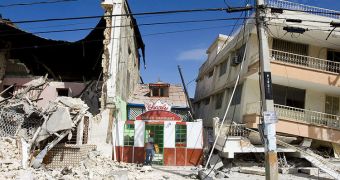A team of investigators in the United States, led by scientists at the Princeton University, have just launched a new online tool, that can produce realistic movies of earthquakes based on complex computer simulations.
Though technically demanding to produce, due to the large amount of calculations required to make them display relevant data, the short clips can be available online to scientists and the general public alike within hours of the real-life event.
This would give both researchers and emergency response crew sufficient data to make calculations, and to plan for more efficient rescue efforts, respectively.
What the videos do is they create a view of how the shock waves generate by the tremor's epicenter spread in the surrounding area when the earthquake begins.
Analysts believe that the new tool could also be used to understand earthquakes better, which would in turn lead to the development of better prediction methods.
Another thing that could easily be achieved is creating better maps of the Earth's interior. At this point, these maps are lacking in accuracy, and could use a little more details, experts in the field say.
The new online tool was developed by a team of computational seismologists and computer scientists.
“In our view, this could truly change seismic science. The better we understand what happens during earthquakes, the better prepared we can be,” says expert Jeroen Tromp, the leader of the research effort.
“In addition, advances in understanding seismic waves can aid basic science efforts, helping us understand the underlying physics at work in the Earth's interior,” he adds.
“These visualizations, we believe, will add greatly to the research effort.,” explains Tromp, who is a professor of geosciences and applied and computational mathematics at Princeton.
He is also the director of the Princeton Institute for Computational Science and Engineering (PICSciE).
Details of the new seismic research tool appear in a paper published in the October issue of the esteemed Geophysical Journal International.
The tool was made possible only through the use of advanced computing power, explains paper author Dennis McRitchie, who is the Princeton Office of Information Technology lead high-performance computing analyst.
“'This is computationally intensive – it takes five hours to produce a 100-minute simulation,” the scientist concludes, quoted by the Royal Astronomical Society.
The videos that have been produced thus far can be downloaded from here.

 14 DAY TRIAL //
14 DAY TRIAL //